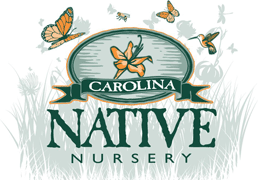Rhody Max: Your first native?
Rhody Max: Your first native?
Opening a native plant nursery 20 years ago in western N.C. may not have been the best idea. I didn’t know what I was doing but was open to new opportunities. One of them came quickly when a potential new client called about cutback rhododendrons. Having no clue what he was talking about I called my local cooperative extension agent and started asking questions. So of course he gave me a quick lesson in what cutback rhododendrons were and introduced me to some local companies that could help, and help they did. They still are.
Native plants have been harvested in the mountains of western N.C. for centuries. Ginseng and Galax are well known. Rhododendron maximum (Rosebay) and Kalmia latifolia (Mt. Laurel) have been harvested and shipped up the east coast for decades by the 100,000’s. Although a little dated, it was reported that in 1979 western N.C. sold $4 million worth of these native ornamentals ($14M today).
These plants have provided an important source of jobs and economic boost to parts of western N.C. when others disappeared. Mitchell (home of Mt. Mitchell) and Avery (Grandfather Mt.) counties became the center of cutback production when logging and mining left the men of the area jobless.
Logging and mining were essential parts of the economy of these counties. An immense logging industry that existed in these counties from the late 1880’s ended by 1940. Logging had employed roughly 30,000 people in N.C. in 1920’s. 1000’s of acres had been clear cut. A massive flood in 1940 due to the environmental degradation causes by this clear cutting was the final blow. Plus the conservation efforts that led to the Blue Ridge Parkway, Grandfather Mountain, more many more showed that tourism could be an important part of its future..
Prospectors first started mining mica in the Spruce Pine Mining District (Avery and Mitchell County) in the 1850s. A mica boom in 1878 helped supply materials for an insulator in Thomas Edison’s electric motor, windows for furnaces and woodstoves, insulation in toasters, and was used in vacuum tubes. When World War II broke out, the over 700 mines in Yancey, Mitchell, and Avery counties began working overtime to supply the nation with all it needed. The mica mines went full bore until solid-state electronics were developed in the 1960s, causing many to close.
Many of these unemployed men in the counties went to the woods and started growing, digging, and selling cutbacks. Rhododendron and Kalmia cutbacks are available either as field grown or harvested in place. Field grown cutbacks involve removing the top of the plant and digging rootstock out of an area of younger wild plants. Rootstock is no more than the one foot (1’) in diameter, usually smaller, healed in for a short period of time, and then lined out in a field like any other field grown nursery plant. This represents a small portion of cutback production. They are easy to dig, can be fertilized and sprayed, and are fairly uniform in appearance.
The vast majority of cutback plants are produced ‘in place’ on the nurseryman’s land. A patch of rhododendrons or kalmias will all be cut all off to the stump (burl). The first year’s growth produces the first few sets of leaves from dormant buds then the following years show 6”-12” of growth. It usually takes 3-4 years before these plants reach the 2-3’ range. This practice is a sustainable practice too. These plants, especially the rhododendrons, come back from the roots that remain after harvest. The tools of the digging trade are a weighted spade (20 lbs. or more), ax, chainsaw, files, burlap, and pinning nails. These plants can take a couple of minutes up to 20 to dig, burlap, and then have to be hauled out and loaded. If you have ever been to western N.C. and seen how steep it can be imagine carrying these plants out.
Rhododendron Maxs and Mt. Laurels have been a mainstay of the nursery trade for decades. They both naturally occur throughout the eastern U.S. Generations of landscape designers and architects from western N.C. northward have counted on these evergreen natives for their beauty, durability, and supply for decades. Perspective on the economic importance and history of these native plants may make their use a little more meaningful.
